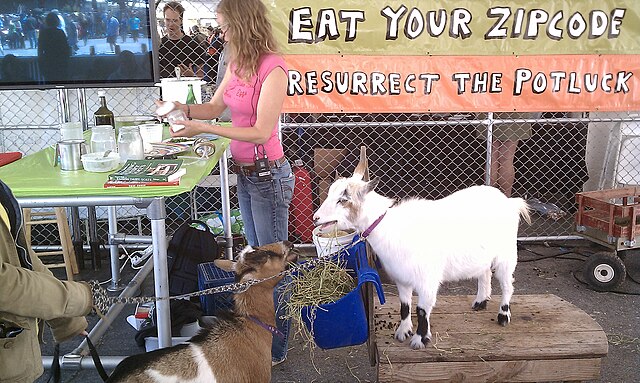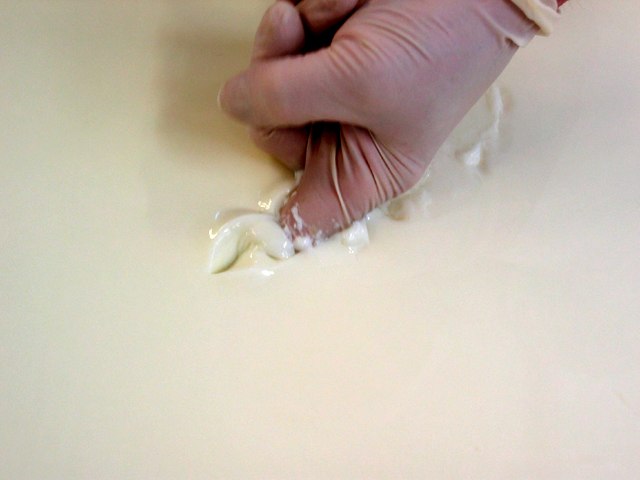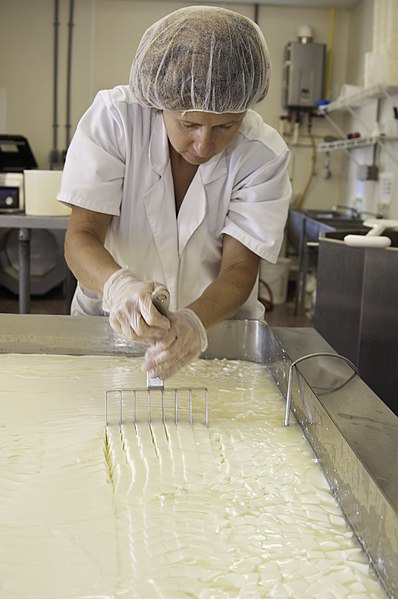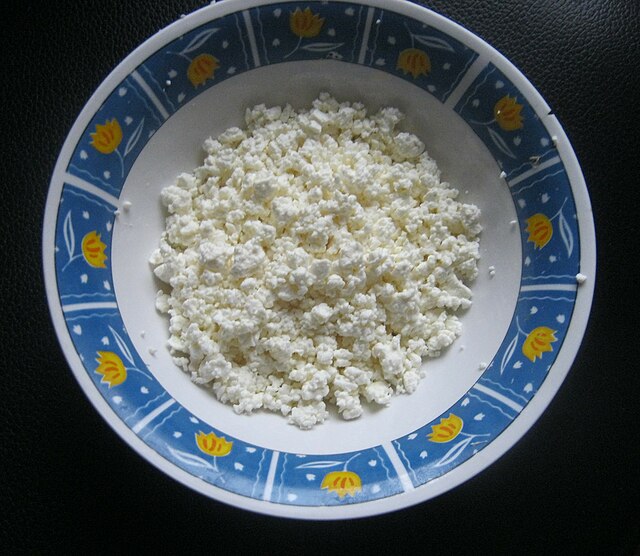Cheesemaking is the craft of making cheese. The production of cheese, like many other food preservation processes, allows the nutritional and economic value of a food material, in this case milk, to be preserved in concentrated form. Cheesemaking allows the production of the cheese with diverse flavors and consistencies.
During industrial production of Emmental cheese, the as-yet-undrained curd is broken by rotating mixers.
A cheesemaking workshop with goats at Maker Faire 2011. The sign declares, "Eat your Zipcode", in reference to the locavore movement.
The production of Gruyère cheese at the cheesemaking factory of Gruyères, Canton of Fribourg, Switzerland
Fresh chevre hanging in cheesecloth to drain.
Curd is obtained by coagulating milk in a sequential process called curdling. It can be a final dairy product or the first stage in cheesemaking. The coagulation can be caused by adding rennet, a culture, or any edible acidic substance such as lemon juice or vinegar, and then allowing it to coagulate. The increased acidity causes the milk proteins (casein) to tangle into solid masses, or curds. Milk that has been left to sour will also naturally produce curds, and sour milk cheeses are produced this way.
Testing of the Setting of cheese curd during the manufacture of cheddar cheese
Heating and stirring the curd in the traditional process to make French Beaufort cheese, an Alpine cheese
Cutting of milk curd into small cubes using a curd knife
Lithuanian curd








